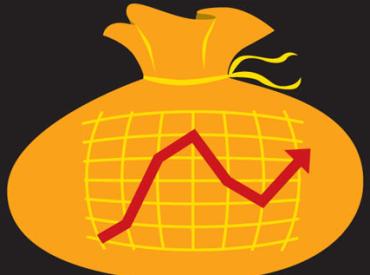
All of us dream of becoming a crorepati and spend a lot of time trying to figure out how to do it. Remember, becoming a crorepati by saving and investing smartly is easier -- but it requires discipline and patience -- than waiting for Lady Luck to smile on you.
There are five ways -- four that depend on your luck and the fifth one that depends on YOU -- to do it.
As you can see the first four options are better left to luck and many other factors beyond our control. But the fifth option is for YOU to pursue. Learn to take control of your financial destiny. It is possible to become a crorepati in your lifetime and it's not a miracle. Here's how.
Becoming a crorepati dependes upon three factors:
A disciplined approach towards saving and sensible investing choices will take you to your first crore as long as you allow COMPOUNDING to do its magic.
If you were to save and invest Rs 64,000 per year (which is slightly more than Rs 5,000 per month) you could become a crorepati in 25 years. The tables here show the numbers. We have put 12 per cent as a reasonable rate of return over a long period of time.

Similarly if you invest Rs 20,017 per month for 15 years you could have Rs 1 crores as savings:

Let us now take a closer look at the factors which make this happen:
1. Amount invested every month/year
It's intuitive that the more you are able to save and invest today, the larger your reward will be down the road. However, research shows that even the smallest addition to your savings each month/year can make a big difference in reaching your targeted amount. The power of compounding is almost magical.
Disclaimer: We have not taken inflation or future value of money into account. The purpose of the article is to demonstrate the power of compounding and the need for saving at regular intervals.
Investmentyogi.com is a one-stop personal finance website which helps in managing finances, investments and taxes through services like financial planning, online tax filing, budgeting and 'Ask the Expert'.

The rate of return (the amount you earn on your savings) has a huge impact on the amount of money you'll end up with. Different investment vehicles have different expected returns. For example, Indian stocks have historically returned more than 15 per cent per year. Debt (or fixed income instruments), in contrast, has a current return of 8 to 9 per cent per year.
Your goal is to find a rate of return that offers the highest potential for growth, but at the lowest possible potential for risk of loss. Over time, we have found that the most prudent solution is a diversified combination of investment assets (stocks, bonds, cash, real estate, and alternative investments).
Assuming that you invest Rs 100 at 11 per cent (CAGR), you would have Rs 1,359 at the end of 25 years. However, if you were able to invest Rs 100 at 13 per cent per year, you would have Rs 2,123 at the end of 25 years.

You can see that the difference is huge.
Disclaimer: We have not taken inflation or future value of money into account. The purpose of the article is to demonstrate the power of compounding and the need for saving at regular intervals.
Investmentyogi.com is a one-stop personal finance website which helps in managing finances, investments and taxes through services like financial planning, online tax filing, budgeting and 'Ask the Expert'.

To illustrate the power of compounding over time, let's look at the first example: Rs 2,000 were saved and invested each year from age 19 to 26 (for a total of 8 contributions). In the second example, Rs 2,000 were saved and invested each year from age 27 to 65 (for a total of 39 contributions).
Assuming that long term rate of return was 12 per cent at age 65, the first example ended up with Rs 20,43,747 (vs. Rs 13,68,020 in the second example), even though the total amount contributed over the 8 year period was only Rs 16,000. It sounds astonishing but just do a simple calculation and you will realise how true it is. Reason?

The first example had 8 more critical years to invest at the same rate of return at the beginning of the investment period. That's the power of compounding!
Now you know how to become a crorepati: Get lucky or start on the 'slow and steady' journey. Do not wait for the right time or a starting amount. The key is to start and the time is NOW. A financial plan can be of great help in achieving this goal. Now you can also get a FREE Financial plan (http://www.investmentyogi.com/FinancialPlans/common/home.aspx) at InvestmentYogi.
Action plan:
Disclaimer: We have not taken inflation or future value of money into account. The purpose of the article is to demonstrate the power of compounding and the need for saving at regular intervals.
Investmentyogi.com is a one-stop personal finance website which helps in managing finances, investments and taxes through services like financial planning, online tax filing, budgeting and 'Ask the Expert'.